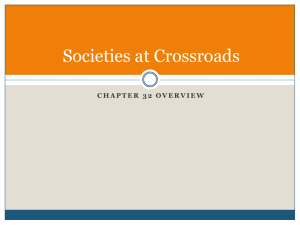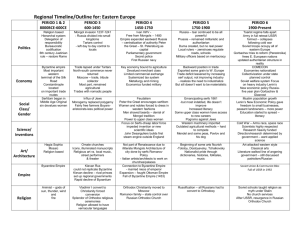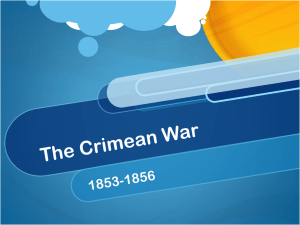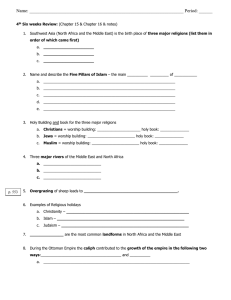Eastern Europe ("lands in between") 13 countries + Overview
advertisement
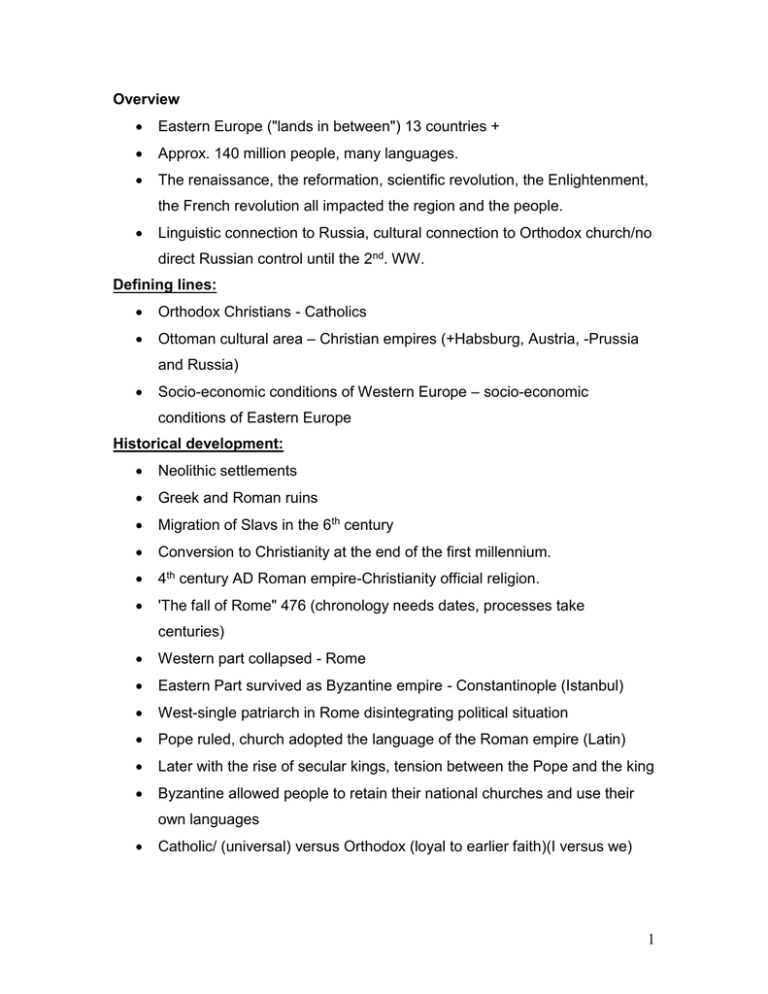
Overview Eastern Europe ("lands in between") 13 countries + Approx. 140 million people, many languages. The renaissance, the reformation, scientific revolution, the Enlightenment, the French revolution all impacted the region and the people. Linguistic connection to Russia, cultural connection to Orthodox church/no direct Russian control until the 2nd. WW. Defining lines: Orthodox Christians - Catholics Ottoman cultural area – Christian empires (+Habsburg, Austria, -Prussia and Russia) Socio-economic conditions of Western Europe – socio-economic conditions of Eastern Europe Historical development: Neolithic settlements Greek and Roman ruins Migration of Slavs in the 6th century Conversion to Christianity at the end of the first millennium. 4th century AD Roman empire-Christianity official religion. 'The fall of Rome" 476 (chronology needs dates, processes take centuries) Western part collapsed - Rome Eastern Part survived as Byzantine empire - Constantinople (Istanbul) West-single patriarch in Rome disintegrating political situation Pope ruled, church adopted the language of the Roman empire (Latin) Later with the rise of secular kings, tension between the Pope and the king Byzantine allowed people to retain their national churches and use their own languages Catholic/ (universal) versus Orthodox (loyal to earlier faith)(I versus we) 1 Catholicism - Rome (Croats, Slovenes, Hungarians, Czechs, Slovaks and Poles) (Latin as the elite language) Orthodoxy - Constantinople (Greeeks, Bulgarians, Serbs, Romanians, Ukrainians and Russians) (No Latin) Russian empire versus scientific revolutions, industrialization etc. Ottoman empire influence on Southeaster Europe versus the Russian, Prussian and Austrian on the north Implications of Ottoman rule: not converting to Islam??? Ask Bulgarians! Late 19th early 10th century independence movements along the national lines WW 1 and the collapse of the Habsburg resulted in the establishment of nation-states All of these states were ethnically diverse (Hungary exception) Until the WW 2 national self determination with underdeveloped economies (control of territorial questions, economic relations and internal political organization) Lack of control over global issues (rise of Nazis, power of the Soviet Union) Difficulties of transition from empires to nation-states WW 2, Soviet occupations, stabilization of Soviet block. 2
